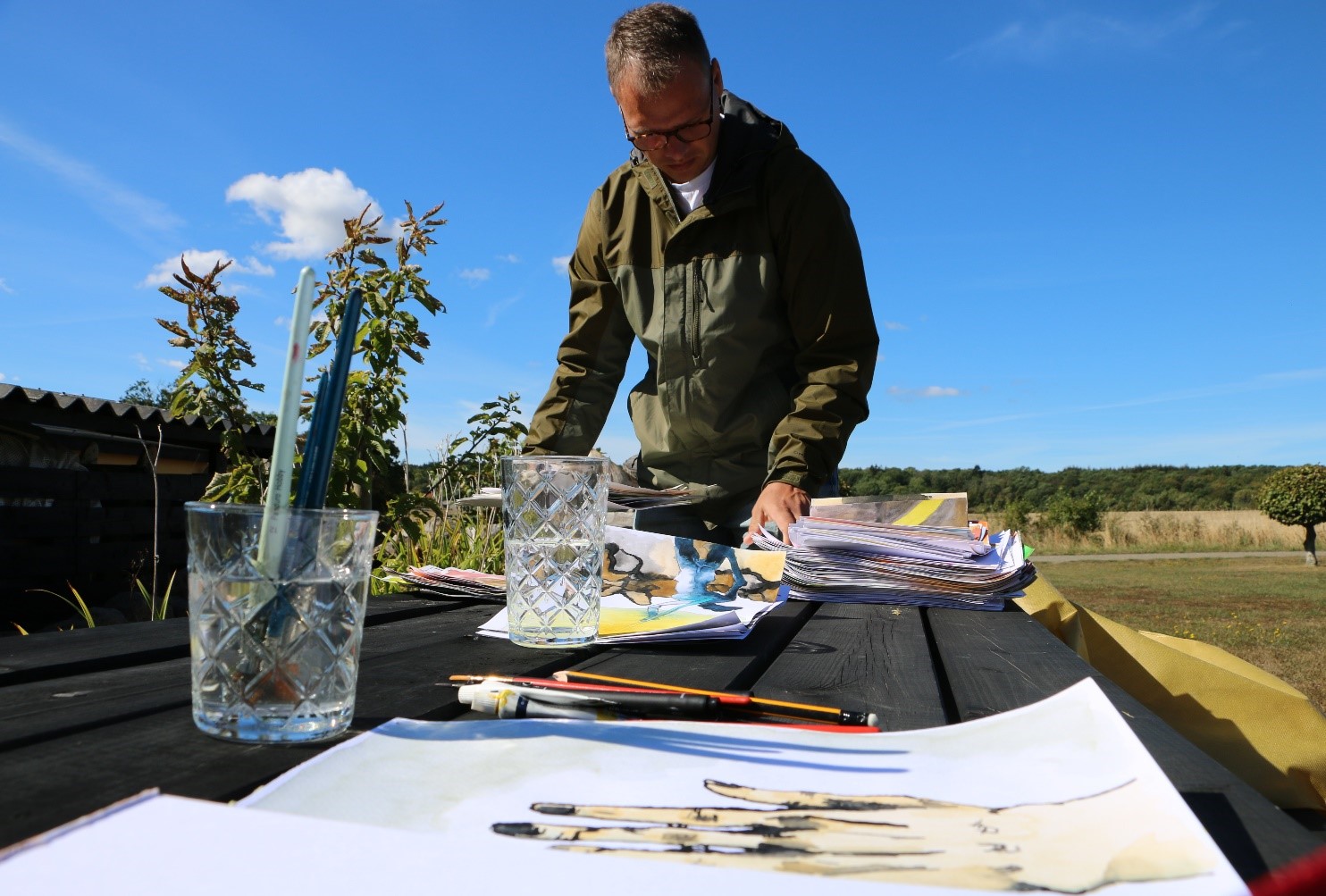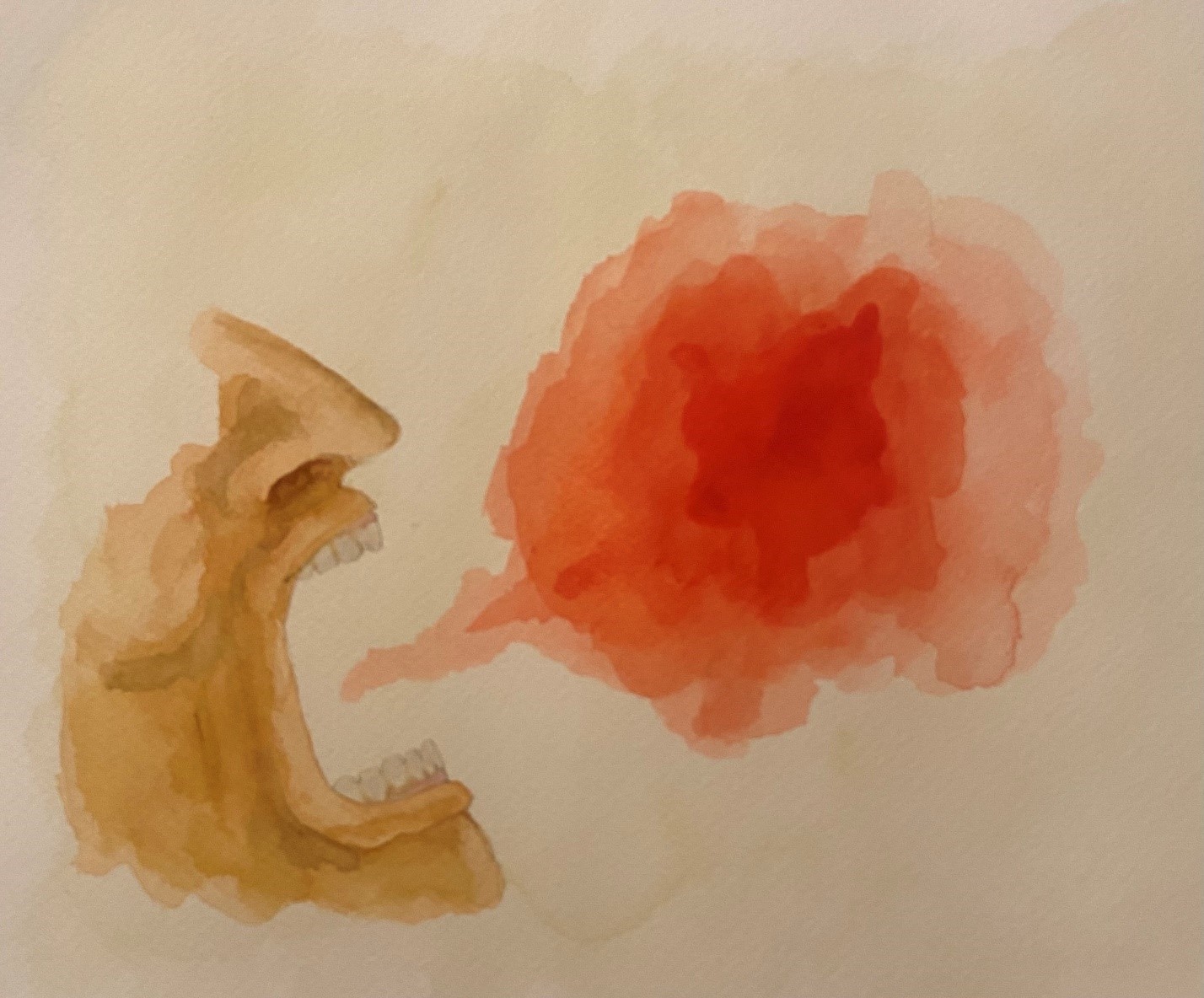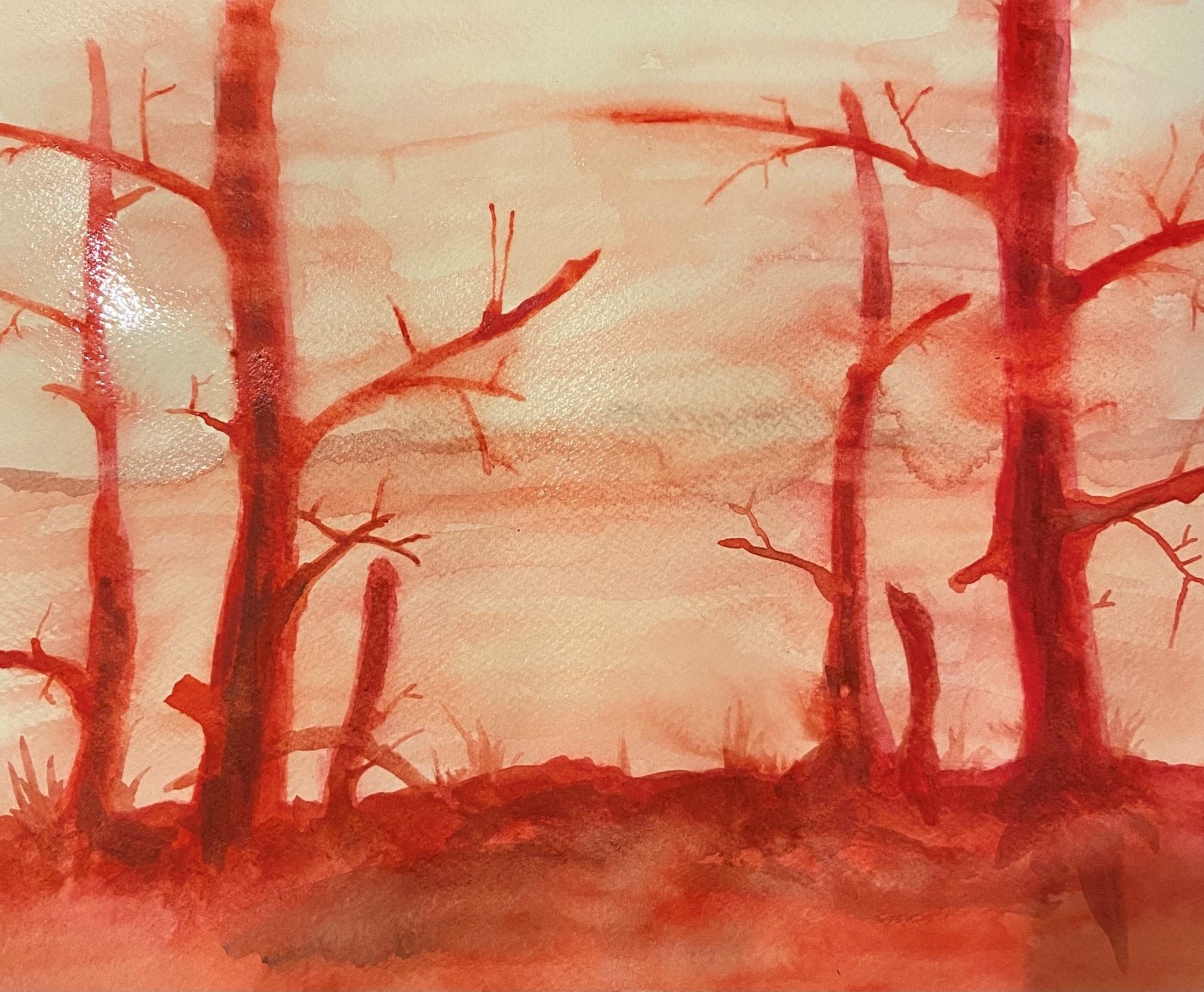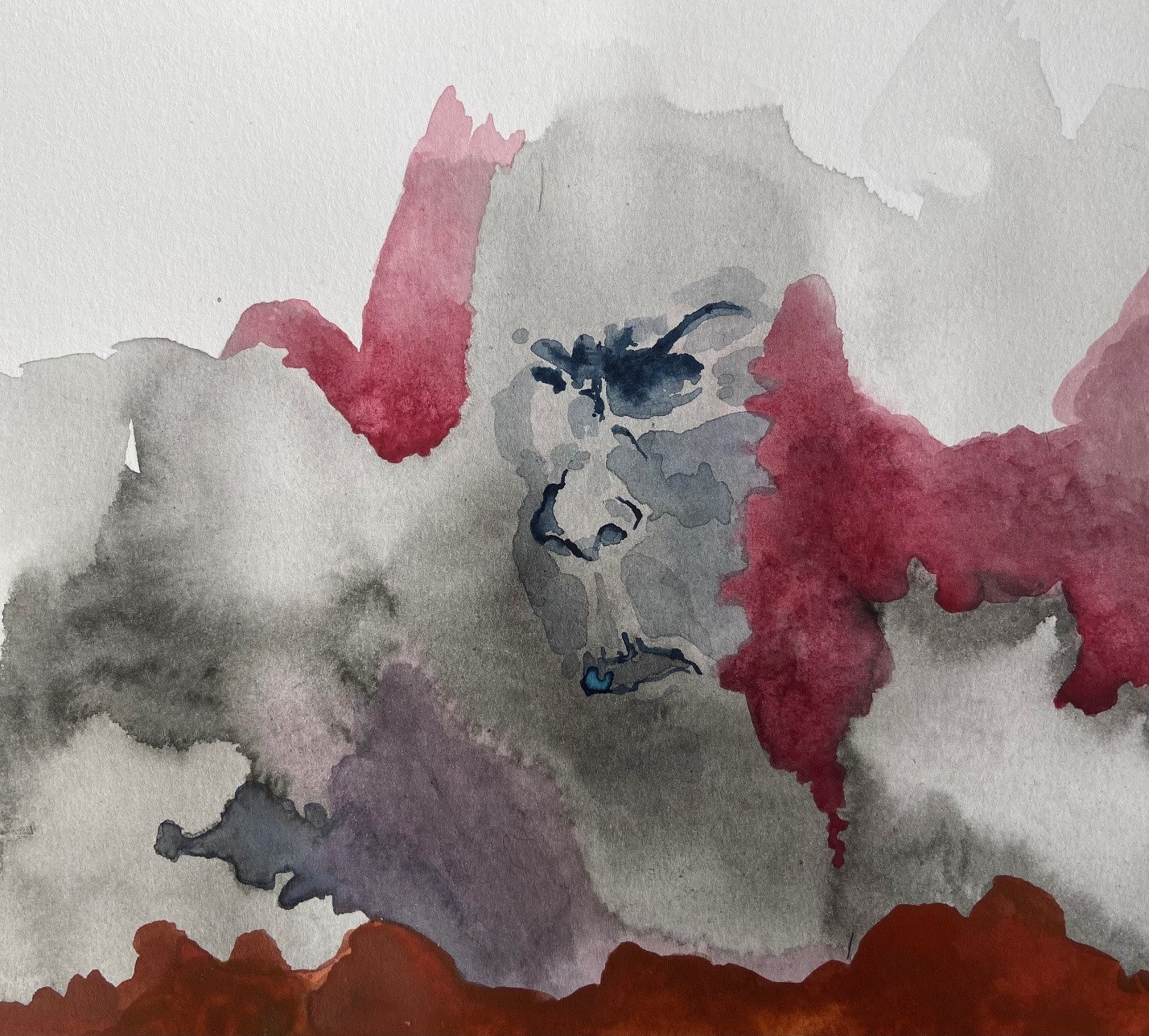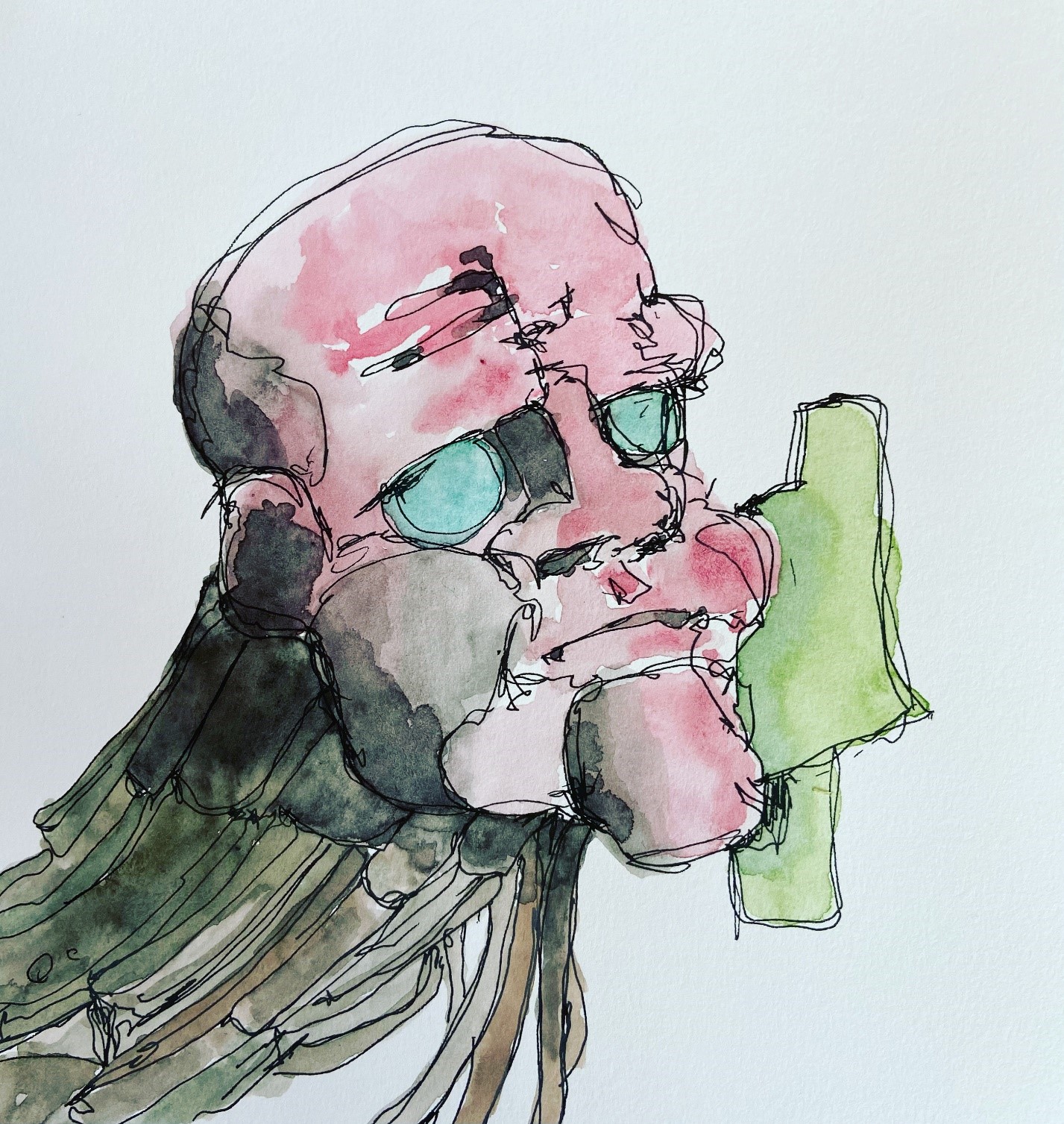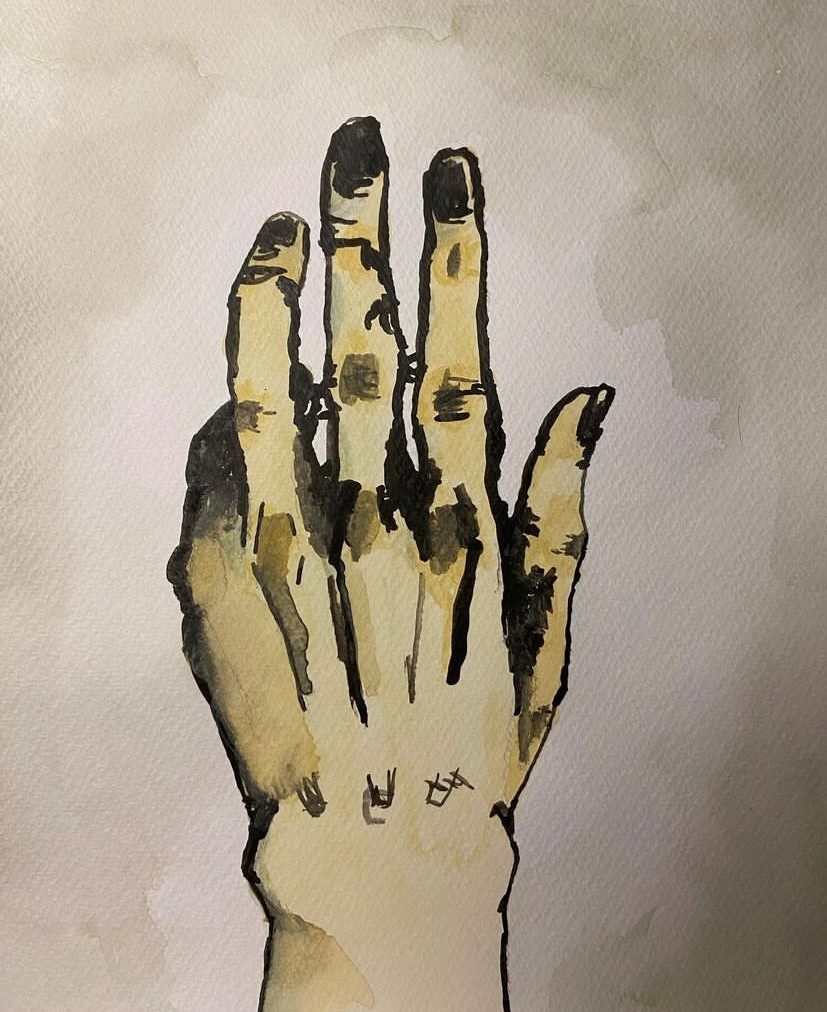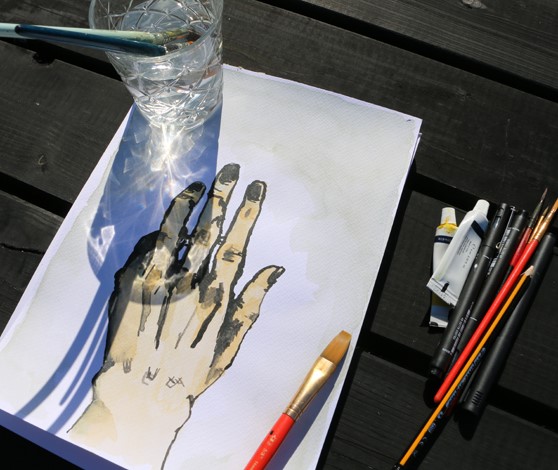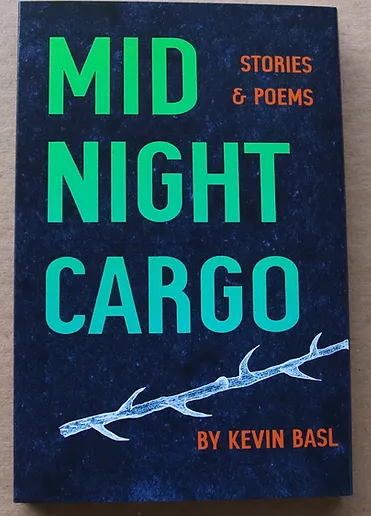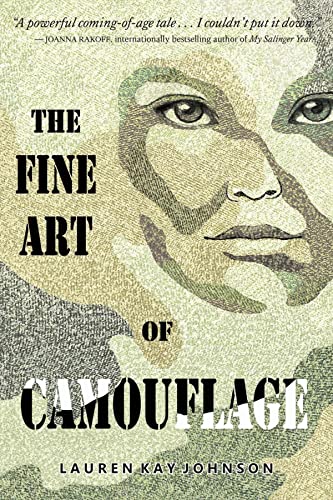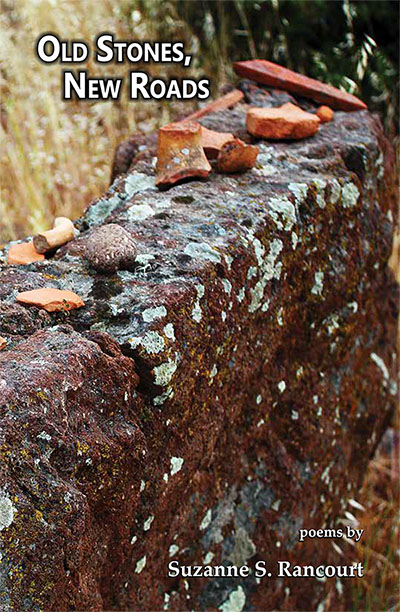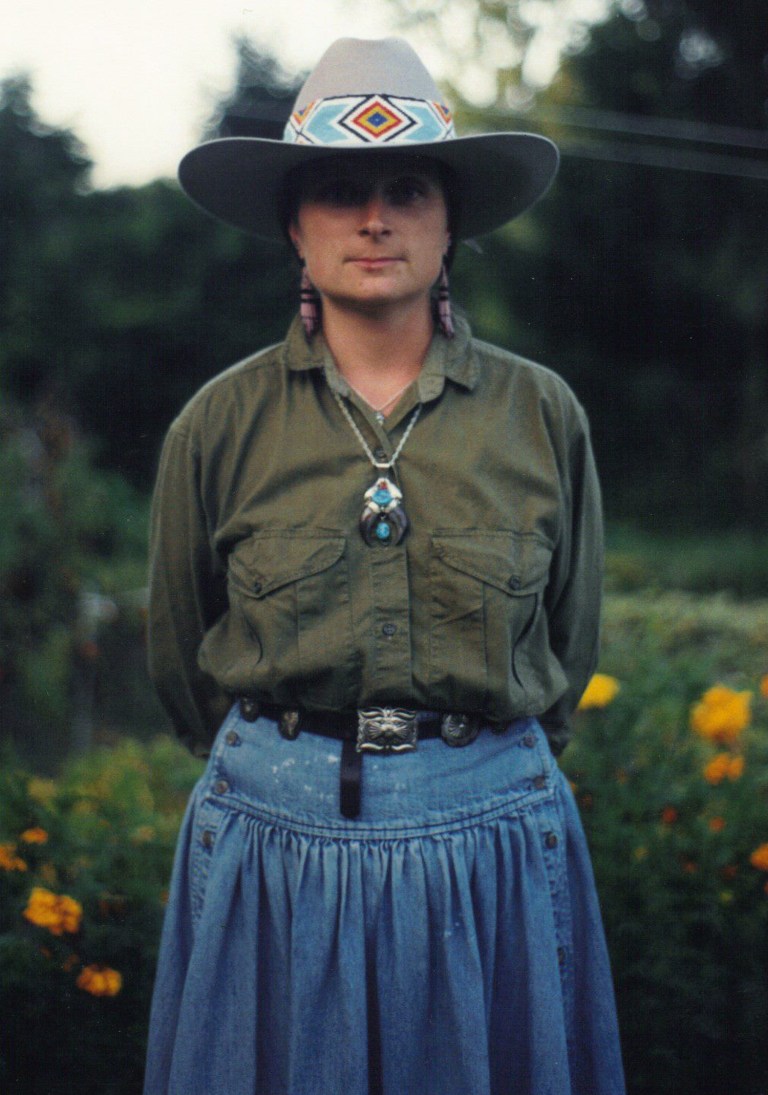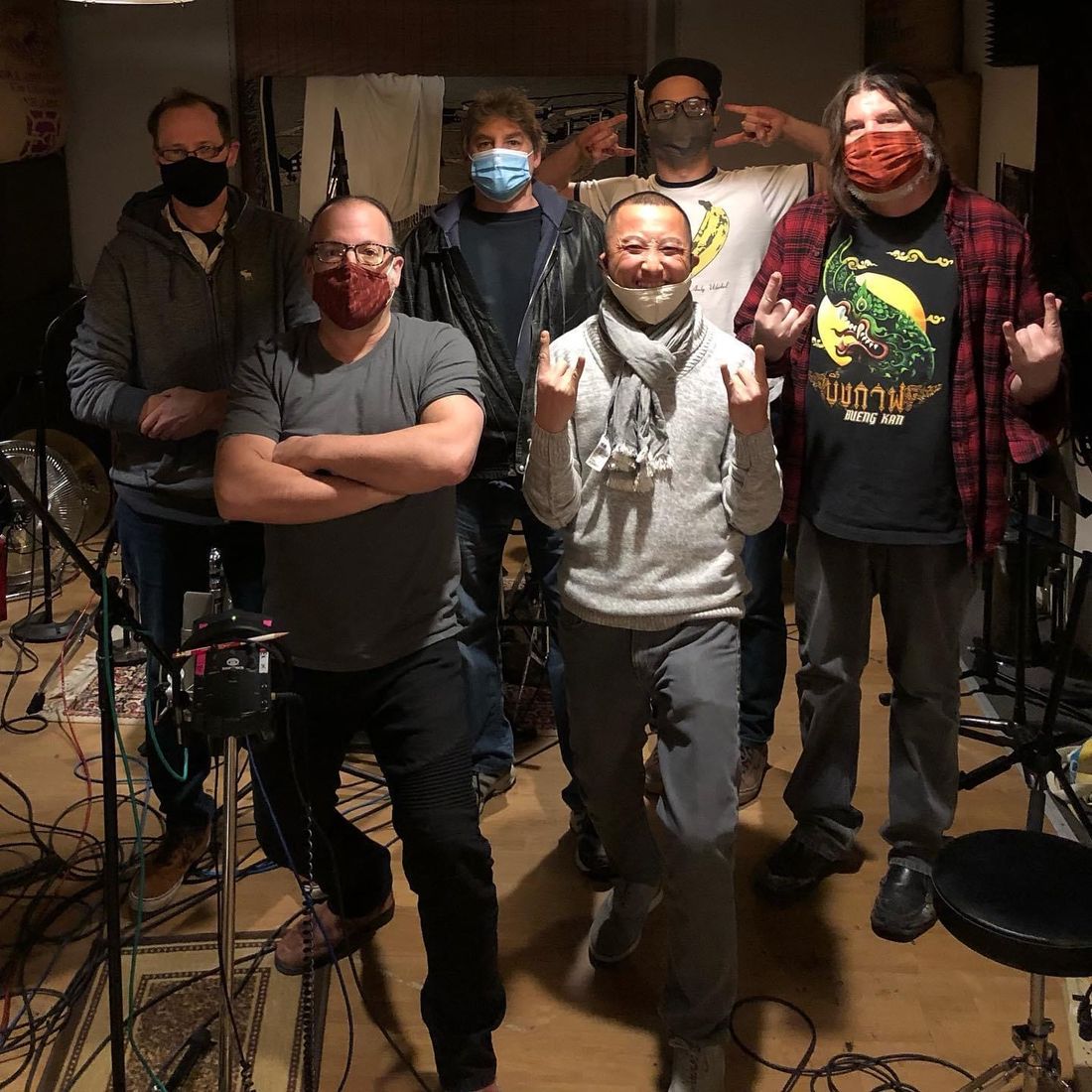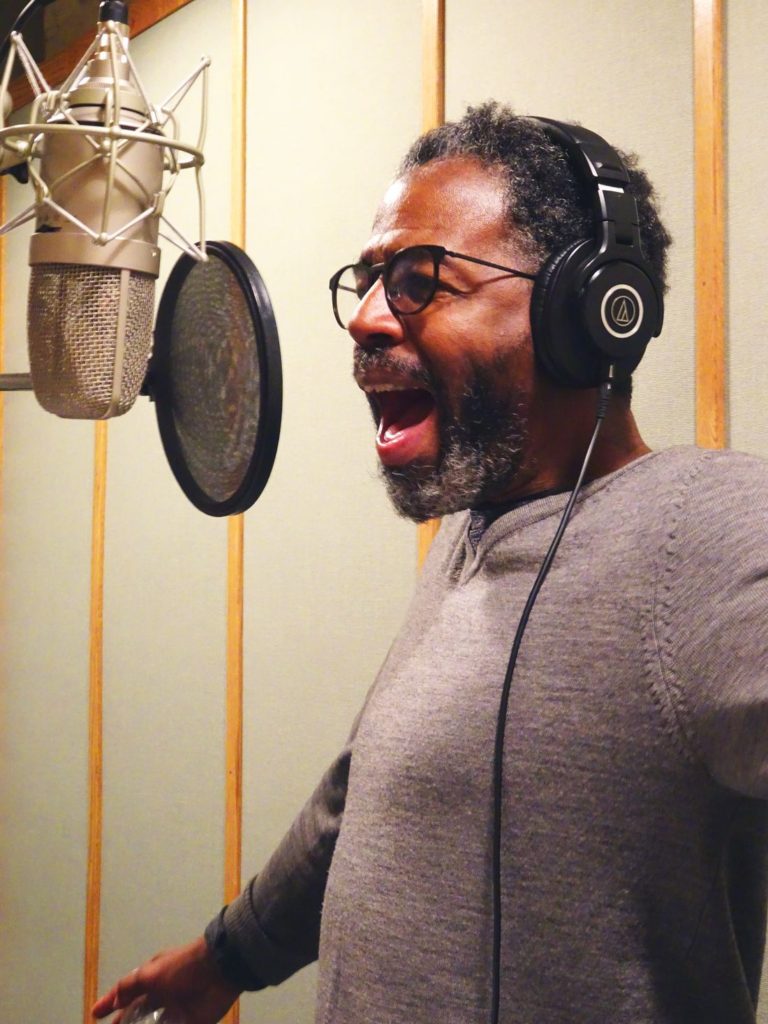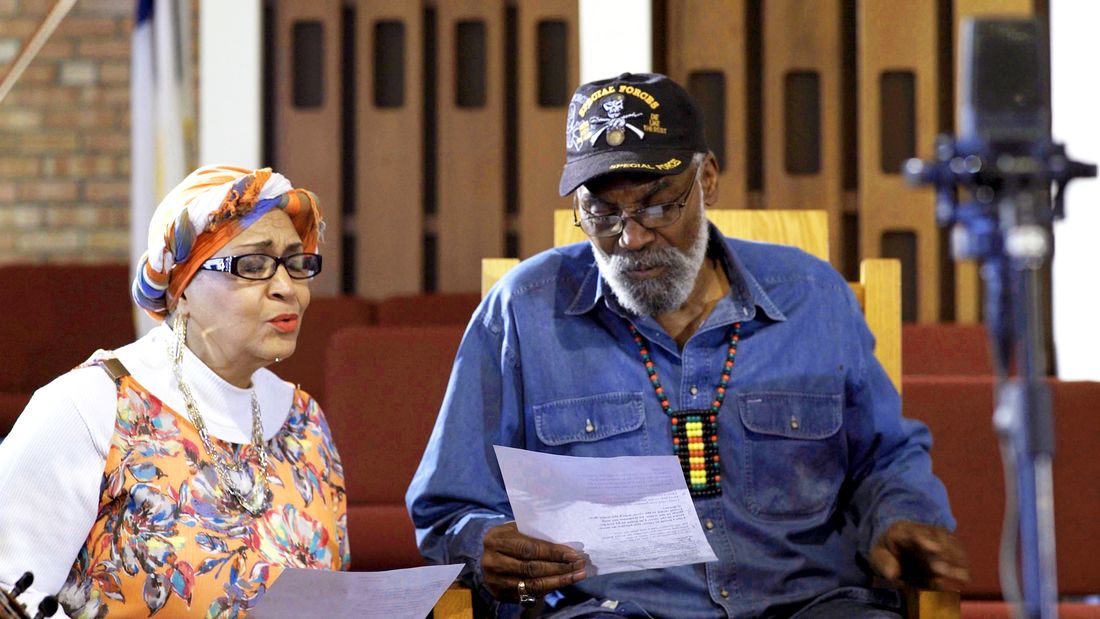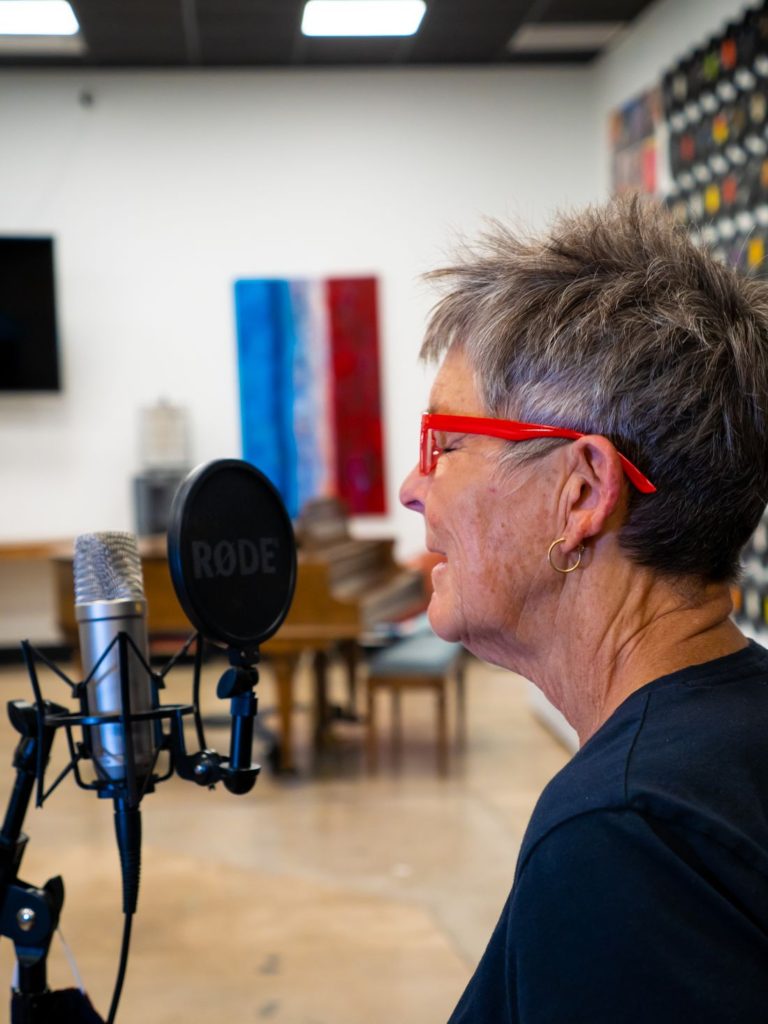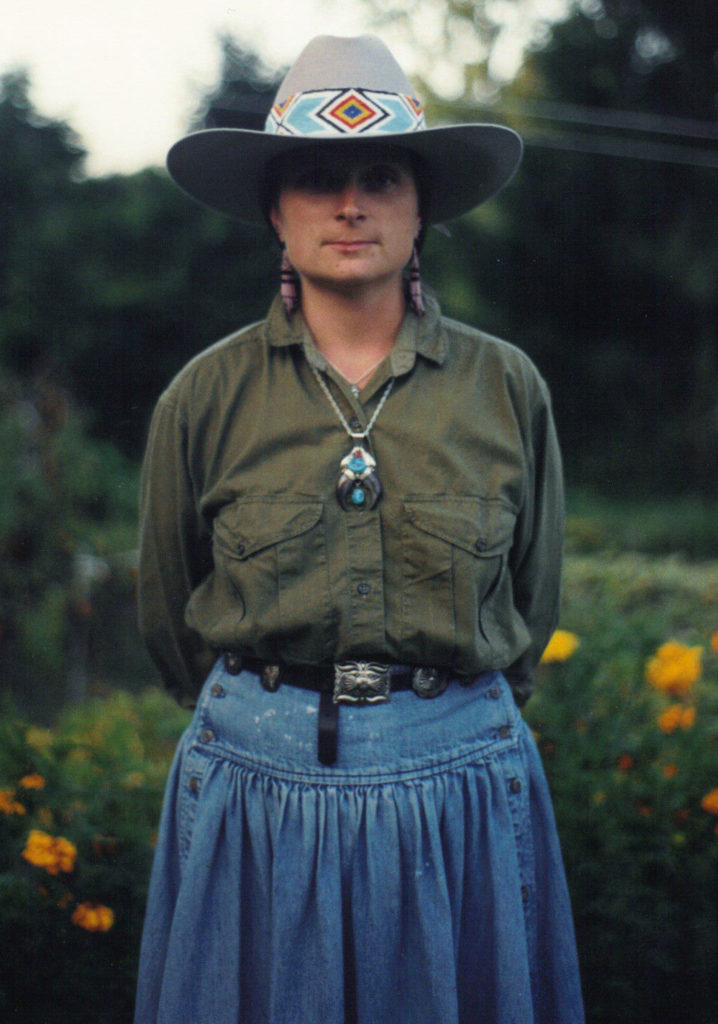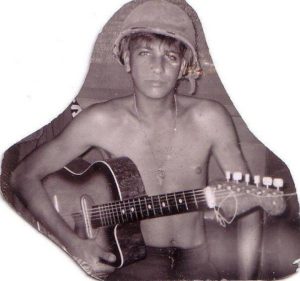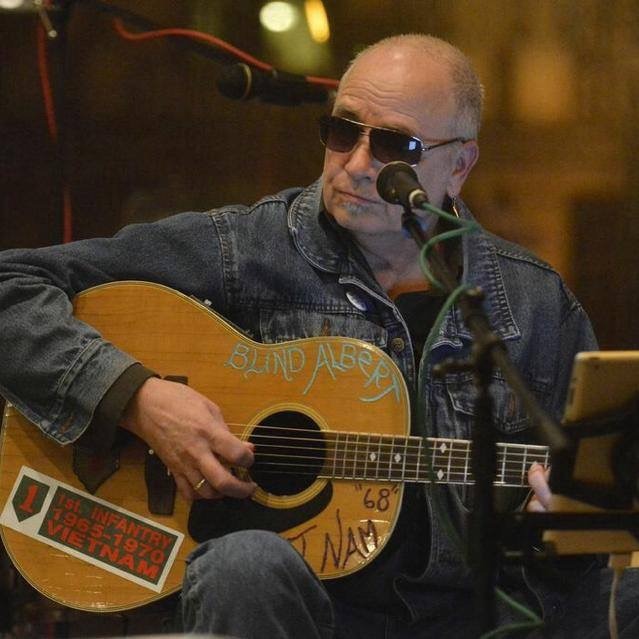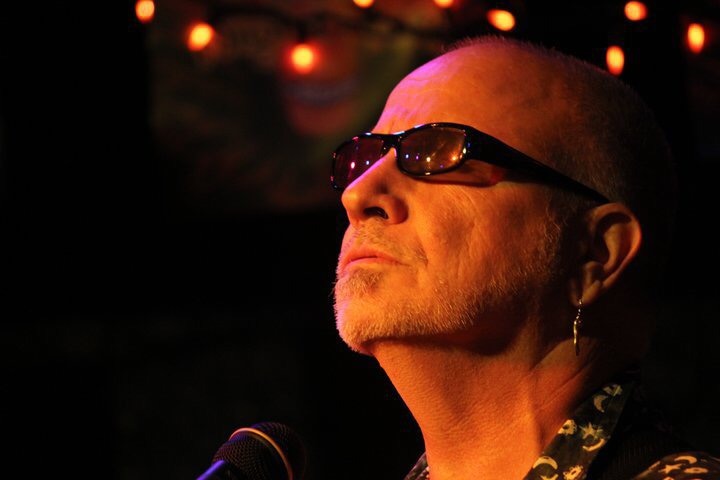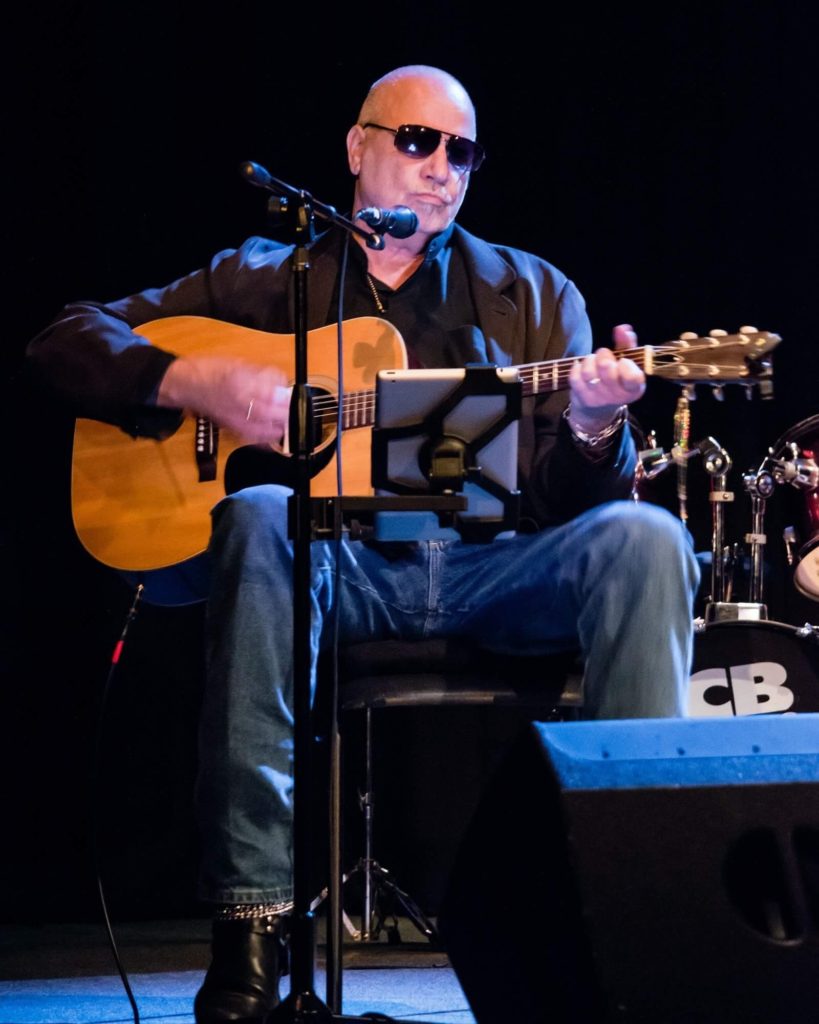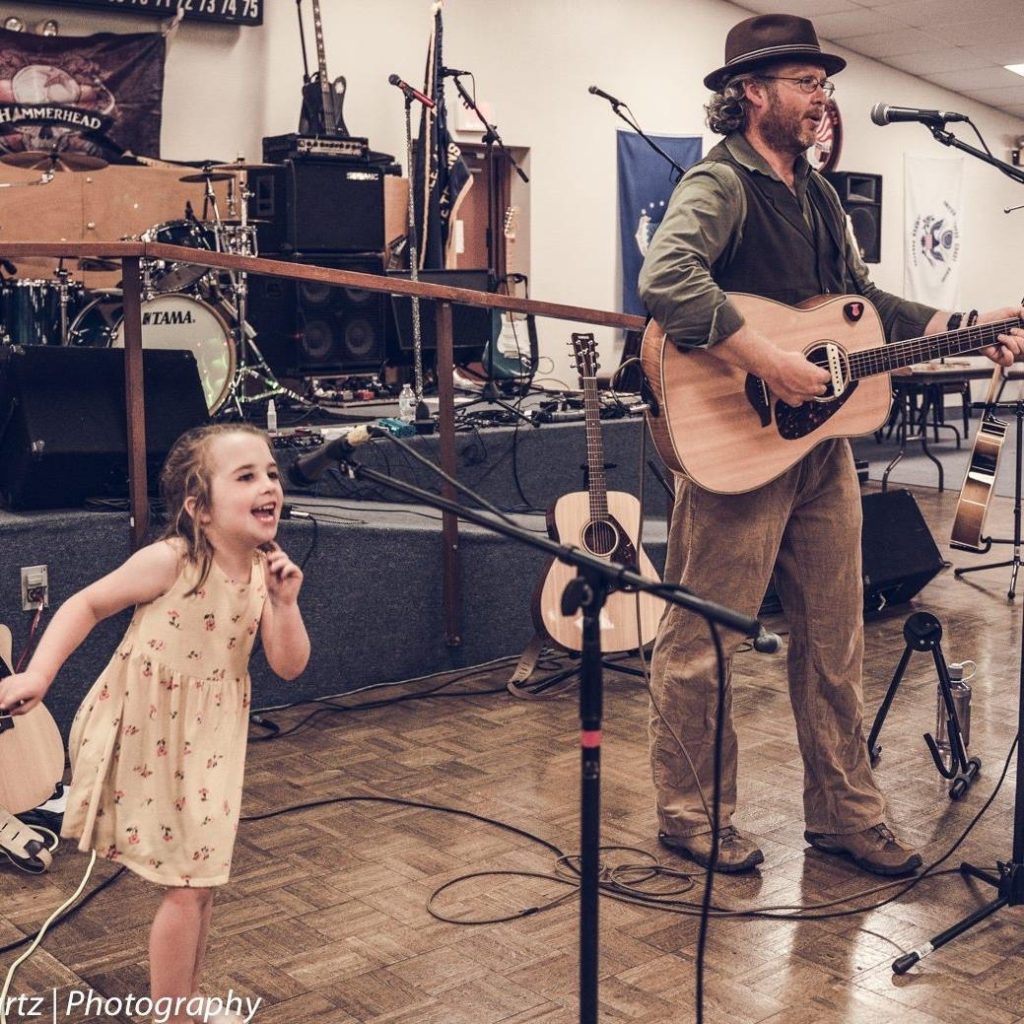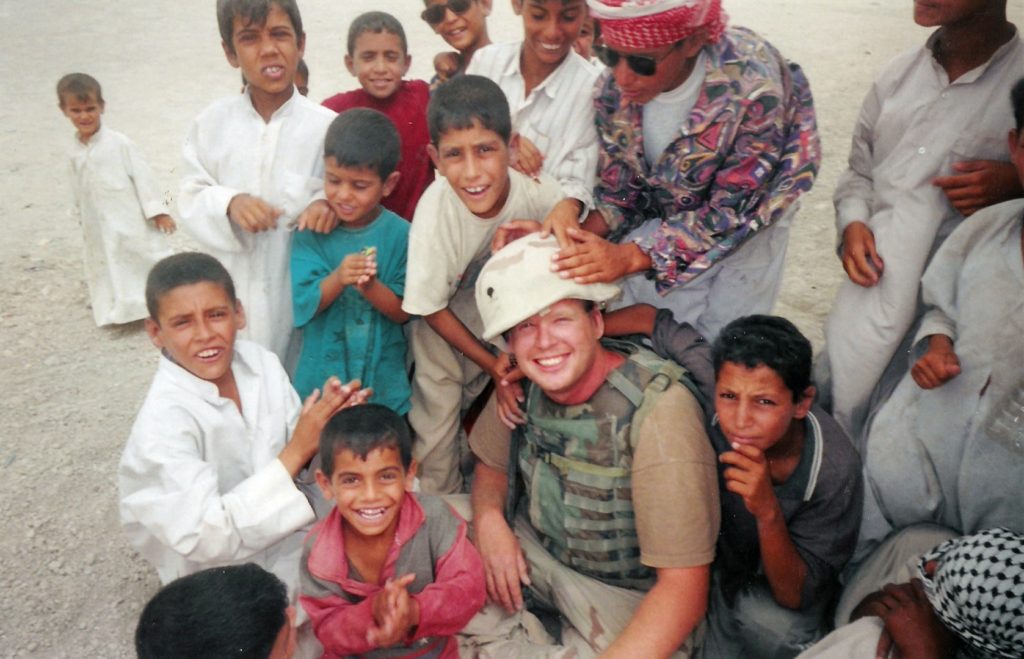New Interview by Larry Abbott: Doug Rawlings
Doug Rawlings had his life planned out: graduate school, business school, eventual law school, and a career in business. But then, like thousands of other young men, he received the dreaded SSS Form No. 252, Order to Report for Induction. Future plans on hold. Rawlings completed Basic Training at Fort Dix, New Jersey, and AIT at Fort Sill, Oklahoma. After a two-week leave, next stop, Vietnam, where he was stationed in the Central Highlands (about 100 miles east of Pleiku), “B” Battery, 7th/15th Field Artillery, Firebase/LZ Two Bits, with an MOS of 93F20, Ballistics Support.
After his return to the States, he moved to Boston, and discovered the poetry of Denise Levertov and Muriel Rukeyser. He started writing his own poems, and sent a handful to Bill Erhardt and Jan Berry, who published them in the 1976 Demilitarized Zones: Veterans After Vietnam. Rawlings’ first book, Orion Rising (2014), opens with two prologues: the first discusses his reasons for being one of the five founding members of Veterans for Peace, which originated in Maine in 1985 (and now has chapters in all fifty states, England, and Vietnam). In his statement he is especially concerned about the effects of war on children, past, present, and future. He writes “A group such as Veterans for Peace can offer us, veterans of war, a vehicle to bring our special message to the children of the world.” The second prologue, and the first section of poems, is entitled “A Survivor’s Manual: Out of the Ashes.” In this prologue Rawlings has a running “conversation” with Robert Bly that was touched off by the 1970 Forty Poems Touching On Recent American History, edited by Bly. Rawlings presents excerpts from Bly’s introduction and then he reflects on how Bly’s comments connect to his life and work, especially as they relate to the idea of “political poetry.” Rawlings synthesizes these two apparent opposites, politics and art, when he writes “So I found some kind of comfort, if not inspiration, from Bly’s insistence that poems can be written that would ‘penetrate deeply into the psyche of the nation’ without sacrificing a personal voice.”
Many of the poems in the first section of Orion Rising concern the continuing impact of the past on the present, specifically the ways that memories of Vietnam haunt the life of the veteran. For example, in “A Soldier’s Lament,” Rawlings writes about the Vietnamese children who sat “beneath the barbed wire/ . . . to sell us what they would: . . . .” Now, decades later, “our souls/blister and burn/across the years/above the bonfires/of children’s curses.” In “Medic” Rawlings pleads with a medic to wash the blood of a wounded soldier off his hands, and then in the present to “come stop his screams/from tearing through/my dreams/my dreams . . . .”
About section two, entitled “The Maine Poems: Family, Friends, and Place,” Rawlings notes “So it is a life of books and ‘hands-on’ labor that infuse many of the poems in this section. It is no mistake that love of the land, melded with love of family and friends, weaves throughout them.” Poems such as “Homage to the Winter Moon” find solace in Nature by providing a respite from the “strident headlines” of the world; similarly, in “Ice Out Poem: A Quartet,” the cyclical renewal of Nature offers hope for another year. At the same time, the poems about family often have a melancholic tone and hint at the tension between father and son, in “Father Grieving” and father and daughter, in “The Exchange.” In the heart-wrenching “To Jen Turning Sixteen” the writer is forced to come to terms with familial change and loss as his daughter, “The princess I made you out to be” grows into womanhood: “Yet celebrating you on this day/A new rider on the rhythm of the moon/I must also mourn my own passing/before your eyes . . . .”
The final section of the book, “Fiddleheads: Poems for Children,” contains twelve of the original eighteen poems Rawlings wrote for his young children. He writes that he and the children, ages five and seven, were “immersed in A.A. Milne, caught up in his poems musicality and utter joy of language play. . . . I carried this musicality into the woods and meadows and followed it where it may.” The poems activate the imagination with whimsical juxtapositions, like “Rainbow Girl,” who “just drank up/a hatful of rain/and gobbled down/a most enormous chunk/of sunbeam . . . .” Likewise, “Gravity Experiment”: “But what if we took/a moose/and pumped/his antlers/full of air/and then cut him/loose—- . . . ”
Rawlings next book, A G.I. in America: The Government Issue Chronicles and Selected Poems (2015), comprises two major sections: “The Government Issue Chronicles” and “Selected Poems.” In the Foreword Rawlings recalls the start of the Full Disclosure project, a program of Veterans For Peace. He includes the text of a flyer he wrote announcing the event, held at the Judson Church in New York City. His basic question is, who gets to tell the truth of war? “Is it the soldier coming home wounded in body, mind, and soul? Or the farmer whose land is sown with blood and unexploded ordnance? Or the families with loved ones buried in the ground? Or the families with loved ones maimed in body and mind? Is it, perhaps, all of the above?” His poems attempt to answer all these basic questions by giving voice to those affected by war. For example, “Working in the Garden” is dedicated to Suel Jones, who returned to live in Vietnam after the war. He finds “solace . . . in the warm soil.” However, the past rises up and any sense of peace is destroyed when the memories take hold: “Until they come at him again — unbidden —/those images of the village children/he was ordered to think of as weeds/as better to be wasted early on/than allowed to grow/into the enemy . . . ” Another poem, “Unexploded Ordnance: A Ballad” (dedicated to Chuck Searcy and his team that scour the country for unexploded materiel), juxtaposes the poet on Christmas Eve, pondering the shells he had sown in the war, with a scene in Vietnam of a grandfather leading his granddaughter into a field: “They trip into a searing heat/brighter than a thousand suns.” The book closes with the poem “The Wall” and an apostrophe to the dead whose names are on the Wall. In the poem he writes “Slipping past the panel where/my name would have been/could have been/perhaps should have been . . . ” The lines indicate both a sense of guilt for surviving and also the randomness of war. Why did he live while others died? In the apostrophe he seeks a connection to those brothers: “I will touch your names and force myself to swing back through these many years and put myself in the place and time where and when we may have met.”
In the Shadow of the Annamese Mountains was published in 2020 (hardcover; paperback issued in 2023). The new and selected poems cover work from the years 1974 to 2019. In their various ways the poems offer a gloss on the book’s epigraph, “Whatever you run from becomes your shadow,” as the poems attempt to confront and erase the shadows. There are poems of resistance and hope, and many of the themes Rawlings explores in his other books are evident here. For example, in “Walking The Wall: A Song” (2014), dedicated to his friend Don Evon, Rawlings notes at the start of the poem: “My time in Vietnam started in early July, 1969—Wall panel number W21—and ended in early August, 1970—panel W7, line 29—a walk of about 25 paces past the names of around 9800 dead. I call this ‘walking the Wall.’” While the 1986 poem “The Wall” has a more melancholic tone, this poem ends defiantly, angrily, anti-war: “So take a walk with me down the Wall some late evening/Where we can all listen to the ghostly young soldiers keening/But don’t waste your time thanking them for their service/They just might tell you the truth – all your wars are worthless.” Another “Wall” poem likewise has a sense of anger. In “At The Wall for the Memorial Day Service 2015: A Lament” the speaker is at the Wall for a supposedly solemn service but observes nothing but hypocrisy and phony sanctimoniousness (“The beginning does not bode well./A pasty white rent-a-padre/ . . . wants us to know that the young/did not die in vain”). The dishonesty of the ceremony is in contrast to the reality of this “black granite wall/glistening with the entrails of those/poor bastards we left behind . . . .” The poem ends on a hopeless note: “How can I possibly abolish war in their good young names/how can I tell them they certainly did not die in vain/when I can’t even stop these clueless clowns/from desecrating this holiest of all grounds?”
The book includes a number of photographs by Rawlings’ fellow soldier, Don Evon, which mainly show village scenes, landscapes, and children, and in some cases offer a counterpoint to a poem, as in “Please Don’t Shoot the Orphans” (2013) and “On the Path of Moral Injury: More Questions Than Answers” (2019). About the photographs Evon writes in the introduction: “My hope is the photos here will trigger good memories for those who were there and will provide some small insight into the way of life of a non-political, non-military Vietnam.”
Relatedly, Rawlings co-edited three volumes of Letters to the Wall (2015-16, 2017-18, and 2019-20). The letters are from veterans, family members, friends, and others affected by the war. Some of the most moving letters are from sons and daughters addressed to a parent killed in the war.
Cầu Tre/Bamboo Bridge, Conversations between a Vietnamese Refugee and an American Veteran. Told in Poetry and Prose was published in 2021. The book is a collaboration between Rawlings and Teresa Mei Chuc, and is bilingual, with work in both Vietnamese and English.
The poems and prose alternate between Chuc and Rawlings. They do not necessarily form a “dialogue” between the two writers but rather create thematic echoes in the book’s five sections.
Most recently, Rawlings journeyed to Vietnam in August, 2023, for the 14th Engaging With Vietnam conference.
In his remarks at one session of the conference Rawlings talked about the idea of heritage and noted “that we who were in the U.S. military as part of the American war in Vietnam are now part of Vietnam’s heritage and, through us, American veterans, Vietnam has become part of America’s heritage.” He also read two of his poems in English, “Unexploded Ordnance: A Ballad” and “The Girl in the Picture,” which were then read in Vietnamese by Ms. Tran Xuan Thao, the director of the War Remnants Museum.
Rawlings’ poetry is about the many forms of heritage. There is the heritage of the war and its effects not only on the veteran but also more broadly on society. There is the heritage of family through the generations. Finally, the poems are about the heritage embodied in literature and the arts. In “Song of Myself” Walt Whitman asks “Who wishes to walk with me?” Through the many facets of his poetry we can walk with Doug Rawlings.
In September 2024 Ron Shetterly’s portrait of Rawlings was unveiled at the Common Ground Fair in Unity, Maine, as the 275th in the series Americans Who Tell the Truth (see https://americanswhotellthetruth.org/).
Larry Abbott:
Let’s start by asking how you came to write poetry, starting around 1974, four years after your discharge in 1970.
Doug Rawlings:
My earlier education was not leaning towards poetry at all. I had received a degree in economics and was working on an MBA at Ohio State University, to go to work at Eastman Kodak, where my dad worked, and become a corporate lawyer. Then I got drafted.
After my war experience, I came home, and my wife and I moved to Boston in the early ’70s for whatever reason. I don’t know. I got a job at a hospital, counting out pills and stuff. But Boston, at that time, had a number of all-night bookstores, and I wandered into one, on Harvard Square actually, and found this collection of poems by Denise Levertov from New Directions Books about her recent experiences in Vietnam, in North Vietnam, with Muriel Rukeyser, another poet. And I was just blown away. These poems were just amazing. They were, to me, the first realistic, honest account of that war that I read. There wasn’t that much out there. A lot of it was the gung-ho crap or really stoner stuff. I have nothing against that. I was a stoner when I was in Vietnam. Trust me – I was. But I just didn’t want to go in that direction. Her poems had a clinical tinge, but they read beautifully. Again, when I talk about political art, political poetry, I always talk about that notion that you have to be really careful about diluting the politics for the art, or destroying the art in favor of the diatribe from the politics.
It takes real skill to walk that line and come out at the other end with a powerful poem, and Denise Levertov did. I was reading her work and I started writing my own. I didn’t have anybody to share it with; I was just writing it for myself. This was before computers and the internet and all that. I started piecing together some poems, and I discovered in about 1975 or 1976, I think it was, these guys down in New Jersey, Bill Erhardt and Jan Berry, putting together a collection of Vietnam veterans’ poems, called DMZ. I put eight poems in the mail and sent them off to these guys, thinking, what the hell? And they wrote back and said, “We love your poems. We’re going to put all eight of them in this collection.”
Wow. That, for me, was the first time – I like to call it an affirmation. Oh, my God. Maybe my poetry really has some kind of ability to reach others, to work with others. I started writing more poems, back and forth, back and forth, sharing with one or two here, whatever. There was a publication in Maine called The Maine Times. They published a few of my poems, which felt really good. So I continued writing.
Then we moved from Bath, Maine to this old farmhouse, an 1823 farmhouse in Chesterville, Maine. It just so happened that one of the people renting the house across from us was a guy named Jeff Kelly, who was into self-publishing and who had published a lot of books. He connected me with Lulu down in North Carolina, a company that does self-publishing. He, himself, has published 500 books, so he knew what he was doing.
He took me under his wing and started helping me put together these books of poems.
Larry Abbott:
This led to Orion Rising, which has three sections. The first section is more about your war experience, and one of the themes, I thought, was that the past continues to haunt the present, like the poems “Medic” and “Flashback.”
Doug Rawlings:
Right. You’re making me think about this work I’ve done at Togus Veterans’ Hospital [Chelsea, Maine]. I went up there and volunteered for three years in the psychiatric ward, and we would talk about poems from the Civil War right up through the Afghan wars, looking at Walt Whitman, looking at the World War I poets, various writers like that. I would encourage the patients to take material from their psychiatric journals, which they had to keep, the therapeutic journals which they had to keep, and see if they could pull something from that and transform it into this thing called “a poem,” which is, in a sense, this abstract artifact sitting on the table that we’re talking about.
It’s not you, it’s not your war experience, it’s not your therapy, but it’s this thing called a poem. Can we craft it? Can we do something with this to make it for a particular audience, other veterans, yes, or people who are not veterans? We did that kind of work and it leads to this: my theory is that we can use our war experiences, which we’re never going to forget – they’re going to be with us forever, so forget trying to get rid of them – but we can use them in a positive way, as opposed to them using us. That’s what I was talking to these guys about. We had this one vet, he unfortunately died, who was a sniper in Iraq. He wrote these rhyming couplets about being a sniper, and he called them his Dr. Seuss couplets.
We would sit there and laugh. One time we had a sociology student sitting in there with us, and afterwards she said to me, “I can’t believe you guys were laughing at this stuff.” And we said, “Well, yeah, it’s just another way of dealing with it, quite frankly.” And they were quite explicit, but, again, they were humorous. It’s using that notion of gaining control over your experiences. The nurses said this really helped him sleep at night. He would work on poems and then he’d sleep at night.
Larry Abbott:
That relates to one of the quotes in your book: “Whatever you run from becomes your shadow.” If you confront those things, then you lose the shadow.
Doug Rawlings:
Exactly right. If I can tie this into Veterans For Peace, when we formed V FP, that’s one of the specific reasons we did it. We are a 501(c)(3) so we’re an educational organization, not a therapeutic one. There were plenty of those and we knew that, but we thought, can we – most of us were Vietnam veterans, but others joined us later – use our war experiences in a positive way? It was this notion that got us thinking about going to high school job fairs and setting up tables next to military recruiters. We’d assure people that we are not anti-military, but we also want young people to have a deeper understanding of what military service entails.
We had some very interesting conversations with these guys – which, by the way, gets to the point of Full Disclosure, because people are accusing us of being anti-military, anti-recruiting. We said, “No. We’re all about full disclosure. Young people, if you’re going to join the military, take a look at the reality. Find out about how women are treated in the military, for example, or look at this. Look at that. Read this stuff.” So if you still make that decision to join the military, at least you’re going into it a little bit more informed than you otherwise would be.
Larry Abbott:
Another poem in the book, “The Girl in the Picture,” is about the idea of forgiveness and being forgiven.
Doug Rawlings:
“The Girl in the Picture” is that famous photo of Phan Thi Kim Phuc, fleeing a village being napalmed. [“The Terror of War” by Nick Ut]. Most of us who are from the Vietnam Era know the photo exactly – I can look at people my age and say, “You know ‘The Girl in the Picture’?” And they know exactly what I’m talking about, that picture. It was iconic. It won the Pulitzer Prize [1973], and it was on, I think, the cover of Time Magazine. But it was a transformative picture for many people. They said, “This is the reality of war. This is what’s happening.”
I was writing this poem about suicide [the 1997 “Formula for a Single Car Suicide (A Tried and True Veteran’s Way Out)”] – quite frankly, driving down Ridge Road, which is an S-curve, going 70 mph and turning the wheel to the left and to the right and heading into the woods and killing myself. After the war we called those single-car suicides. The VA did not recognize them as suicides, but we did.
A guy all by himself hit a tree, no alcohol involved, no skid marks? This was what he wanted to do. So that was where I was, working on that poem, and I happened to read in a magazine that Kim Phuc, the girl in the picture, was nine years old when that picture was taken, which, at that time, was the exact age of my granddaughter. It just flipped the poem for me, and I started thinking about it in those terms. And at the same time, coincidentally – or, according to Carl Jung, synchronistically, – I was also looking at this collection of poems, a collection from Buddhist texts, and saw that phrase, the shadow phrase, and it flipped the poem for me entirely. I imagined driving down that road and having Kim Phuc appear on the road. What would happen then? Well, I’d have to stop, as I say in the poem, pick her up, and take her home, because that’s what you do when you see a little girl walking down the road: you take her home.
That would happen to be a little village in Vietnam, as I say in the poem, where we could stand at high noon, and there are no shadows. The idea is that, perhaps, forgiveness exists somewhere – and as I say over and over again, I do not have the right to ask the Vietnamese people to forgive me for what we did in that war. But if they offer us forgiveness, we accept it graciously – and gratefully, actually.
I returned to Vietnam in August of 2023 with my son for a conference. I was meeting with a woman, Dr. Tran, who runs the War Remnants Museum in Saigon, or Ho Chi Minh City, depending on what you want to call it. She took me aside and gave me this phrase. She said: “We never forget, but we forgive.” And I thought, that’s exactly where I’m coming from.
Larry Abbott:
The second half of Orion Rising is titled “The Maine Poems: Family, Friends and Place.” This seems to be a counterpoint to the first half, although you do have poems about aging and death, but it seems to have a different tenor from the first section.
Doug Rawlings:
It does. It makes me recall a poem I wrote for Suel Jones, a vet who chose to live in Vietnam after the war. I was talking to him one day and asked him, “Suel, what do these guys do, these NVA guys?” Because he goes out and gets drunk with his former enemies. “What do they do when they retire?” And he looked at me and he said, “Doug, they don’t use that phrase. They say they’re returning to their gardens.” I said, “Ah, okay.” I didn’t do this consciously; I did it unconsciously when I moved into the farmhouse in a wilderness area. My wife and I, both raised in the suburbs, we didn’t know anything about living in the willywacks, if you will, heating with wood, plowing snow, and the like, but we made that choice.
We grew organic gardens and we heated with wood for 20 years, 10 cords of wood a year for three woodstoves, and figuring out that whole thing. Now I can reflect upon that and think, okay, that shifted my attention away from the war to the land – raising a family, having my two kids, a son and a daughter, learning how to do all these “outdoorsy” things. They’re both wonderful, amazing human beings now. They’re very connected to the natural world. But it was that reconnection with the natural world – or for me, a new connection with the natural world, I think, which is part of the healing process.
Larry Abbott:
You also have a section entitled “Fiddleheads,” children’s poems, which seem to be another counterpoint.
Doug Rawlings:
At night, we’d put our kids to bed, they’d be three, four, five, six years old, and we were reading A.A. Milne’s poems from Now We Are Six over and over and over again, silly kinds of poems, beautiful poems, with wonderful rhymes. My kids loved them.
So I started writing poetry in that fashion, just for them. Actually I put together a collection called A Baker’s Dozen, which is 13 of these poems, which were all written for my daughter and my son. They’re illustrated by my granddaughters. They’re reading a poem written to their mom, like “Rainbow Girl,” and my youngest granddaughter, Iona, does this drawing. So that’s what this collection is all about, sort of connecting the generations. I didn’t want to be known entirely as just a war poet. I wanted to expand if I could.
I was asked this by a student the other day at the university, about being a poet. I say this: I’m not really a poet. I think of people who are, like Denise Levertov, who dedicate their lives to writing poetry. I write poetry, I read poetry, but it’s not my main way of living; it’s sort of another part of who I am.
So I don’t kid myself about thinking my stuff is going to be immortal [laughter] or get on The New York Times’ Best Seller list. But I write it for myself and particular audiences.
Larry Abbott:
One aspect of your writing is that you’re trying to bring the voices of veterans to the page, either in poems or prose.
Doug Rawlings:
Letters to the Wall, for example, tries to do that to some degree. As part of Veterans for Peace, we discovered that Obama came up with $63 million to write a history of the Vietnam War. Unfortunately, he had the Pentagon do it. We looked at their website and saw the materials they were using and our reaction was, “Oh, my God, are you kidding me?” So that’s where we really started the veterans full-disclosure idea. What can we do to tell the truth?
I came up with the idea for Letters as part of full-disclosure. Why don’t we ask people who were adults, if you will, during the Vietnam War, who were directly impacted by the war – not just veterans, but conscientious objectors, friends and relatives of those listed on the Wall, Vietnamese people – write a letter to the Wall, the Vietnam Veterans Memorial in Washington, D.C., and we will deliver those letters every Memorial Day. We did that for six years.
Larry Abbott:
How many volumes were there?
Doug Rawlings:
Three volumes, about 500 pieces included in the three volumes. There’s a wonderful poem in there written by a student at the university where I taught. I did a little workshop and she came up to me and asked, “Can I write a letter?” And I said, “Sure.” Well, her grandfather was killed in Vietnam, and she wrote this beautiful poem to him, saying, “I wonder what your aftershave would smell like. What would your voice sound like if you held me in your lap?” Incredibly powerful.
Le Ly Hayslip, a Vietnamese woman . . . Oliver Stone did a movie about her coming to the United States [Heaven and Earth, 1993]. She’s written two letters to the wall. In one of the letters – it’s a beautiful letter – she said, “I forgive you.” She’s writing to the people who killed in Vietnam, American soldiers who killed in Vietnam. She said, “I forgive you.”
Larry Abbott:
You include your poem “The Wall,” with an introduction. In the poem you write: “Slipping past the panel where/my name would have been/could have been/perhaps should have been/. . . Staring through my own reflection/beyond the names of those/who died so young . . . ” How did that poem come about?
Doug Rawlings:
We formed Veterans for Peace in 1985, here in Maine, five of us. In 1986, we found out some vets who joined Veterans for Peace were doing a water-only, 40-day fast on the Capitol steps. They were opposing the war in Central America at that time. We chartered a bus to go to D.C. to support them, which, by the way, was seen off by the governor at that time of Maine, who was a veteran and recognized the work that we were doing.
As a side trip we went to the Wall. This is where my friend, Jerry Genesio [a founder of Veterans For Peace], found his brother’s name. He was killed three weeks after I arrived in Vietnam.
I do this thing called “walking the Wall.” When I go to the Wall – and I’ve been there a number of times – I start at the date when I entered Vietnam, July 2, 1969, and I walk it to when I left the country, August 11, 1970. I believe, rough count, there’s about 9,800 names on the Wall from the time that I was there.
Earlier, I had written a poem that was opposed to this memorial. It’s a very angry poem. I had heard, before I saw the Wall itself, I heard that they were going to build this monument in Washington. I thought: Oh, shit. It’s going to be like one of those with a guy on a white horse with a sword and all that crap. And I said, “We spit on/your war memorials” as part of the poem [the 1984 “On War Memorials For My Beloved Friends in VVAW”].
And then I go to the Wall and it’s just beautiful. It’s just striking. I wrote that poem, what it felt like to be walking down that Wall, thinking of the names. I did it at 2:00 in the morning. There’s nobody around. Just thinking of those names, those people in that wall.
Larry Abbott:
Your second book is A G.I. in America. The cover image by Rob Shetterly is entitled The Dog of War [2015]. About the image Shetterly notes: “The greatest threat to the humanity of the soldier may not be the enemy’s weapon, but his own participation in the war. That’s the dog I see.” Does A G.I. in America continue some of the same themes as the previous book?
Doug Rawlings:
It does. It’s one of those books that has older poems and newer poems in it. I wrote it because I was chosen to be the first Poet Laureate of Veterans for Peace, which was quite an honor. They give me that at the convention. Over the first year and a half or so, I felt that I had to put together a collection as the Poet Laureate; that’s what this is. It’s got some new stuff in it and it’s got some older stuff in it.
Larry Abbott:
There is a sense of bitterness, I thought. The poem “Government Issue at the VA Hospital” has a very bitter undertone. You write about a vet waiting in front of a freight elevator: “what was left of his family/waited downstairs/in the lobby/for what was left/of him.”
Doug Rawlings:
Actually, a lot of my poems come from actual experiences, like when I’d do my workshops at Togus, which, by the way, is the oldest VA hospital in country; it opened right after the Civil War.
I’d see guys in wheelchairs my age or even younger, and they’re going to be there for a long time, and I’m just walking around, looking at stuff. I saw one vet sitting in front of a freight elevator as I went by. That’s where the poem comes from, that notion like, “Oh, wrong elevator.” No, not really.
Larry Abbott:
Because I’m just freight, stripped of humanity.
Doug Rawlings:
I’m just freight now, being sent down to see my family, what’s left of me.
Larry Abbott:
There’s that sense of loss.
Doug Rawlings:
Absolutely. Real loss. I have a tremendous respect for the staff and the doctors at Togus. I know other guys who go to other VA hospitals that are not so good, but this is an excellent hospital. They’re really caring individuals, but you can’t get away from the fact that some of these guys – I look in the eyes of some of these guys, my age or younger, and their lives are just totally taken over by their condition.
Larry Abbott:
There’s also the idea that the war, any war, is never really over, either back home, or in Vietnam, or any war zone. “Unexploded Ordnance” explores this idea.
Doug Rawlings:
That’s a poem I wrote for my good friend, Chuck Searcy, who’s lived in Vietnam for 35 years now. He started Project RENEW, which is designed to make the former war zones safer. He trains Vietnamese to go into villages to look for unexploded ordnance, to look for bombs that have not gone off that are killing people now, maiming and killing people. When I went to Vietnam last August, I went to their place. It’s stunning, the prosthetic lab, for example, and all the other things they do. The damage done to the Vietnamese people … even 50 years after the war is over, kids are still getting maimed and killed by these unexploded ordinances. I wrote that poem from the experience of being in the artillery, having done what we had to do, sending those bombs out there, some of which exploded and some of which did not. They’re still maiming people.
Larry Abbott:
And then, in 2000, you published In the Shadow of the Annamese Mountains, which included both new and selected poems. The image of The Dog of War was on the frontispiece.
Doug Rawlings:
Oh, yeah. That’s an amazing image. I wish that image was on the cover of Orion Rising [that cover has a portrait of Rawlings by Shetterly]. I didn’t find him until later, but Shetterly is just an amazing artist. I could talk forever about him. But In the Shadow of the Annamese Mountains, what I like about this, it incorporates a number of photographs by Don Evon that were taken when we were in Vietnam. What I like to tell people – we actually did this – I was in country about eight or nine months. I’m in this little fire base in the Central Highlands, supporting the 173rd. Everything’s off-limits. I was never any place on-limits.
We were surrounded by concertina wire and sandbags but we decided that we were going to go into the village of Bong Son. Our little fire base was set up there. Across this plateau, there was a Korean encampment, and then there was the jungle, and then there was the village down in the jungle. We took our helmets off, our flak jackets off, stacked our weapons, had somebody watch our weapons, and we walked into that village unarmed. A lot of the pictures were taken when we met these kids in the village, just walking along without weapons.
A recurring memory about my experience in Vietnam is the damage we did to children. I didn’t have children at the time when I was there, but obviously I had children afterwards. And I realized, walking along with my daughter when she was two years old down a dirt road, the wonder in her eyes . . . we stole that from those kids.
There’s one picture in there of our dope dealer. She was about 10 years old and she sold us marijuana, heroin, opium, and all kinds of stuff. We laughed about it at the time, but that’s what we did to this kid’s childhood.
Larry Abbott:
The idea of the war’s effects on children comes out in the poem “Grandfathers,” where you’re connecting your family in the present to the children’s deaths in war where the grandfather has to measure the three-foot long coffin.
Doug Rawlings:
I’ve watched a video of a guy with nails in his mouth being interviewed by an American journalist. If you look in the background you’ll see these coffins, just this little, tiny, three-foot-long coffins. I start that poem about how my kids would measure the height of my granddaughters by chalking their measurements on a post. I thought, I know something about feet and inches, so when I saw those coffins, I said, “This guy’s making a whole bunch of coffins for grandchildren.” That just blew me away.
Larry Abbott:
Your most recent book is Bamboo Bridge. It’s in five sections, and seems to be a dialogue with another writer. The sections are: Family, Children of War, When the War Begins, When the War Ends, and Moral Injury.
Doug Rawlings:
Right. This was, again, another amazing experience. I am the poetry editor of a publication called Peace & Planet News, which we’ve been putting out for a few years. One of my friends, who is now the president of Veterans for Peace, Susan Schnall, lives out in Los Angeles. She suggested that I check out poems by Teresa Mei Chuc for publication in Peace & Planet News.
So I did. I liked them. I wrote to Teresa and said, “I love your poems.” We corresponded back and forth. One of the things I like about poetry is swapping poems. She teaches high school in Los Angeles now, but she came over as a refugee. Her mom was a refugee fleeing Vietnam. Her father fought for the South Vietnamese Army, so he was put into a so-called “reeducation camp” for nine years. She didn’t see her father at all. He finally came to the United States, she writes about this in her book, and he tries to kill her. He’s just crazy. He’s just way out there. She’s just a little girl trying to figure out the world from the perspective of being a refugee. Her mom learned how to speak English and they did the usual refugee things, which is captured by her poetry.
What we decided to do was, say, “Let’s put together a collection where I’m the father of a young girl and you’re the daughter of a father. You include some of your poems to your dad, and I’ll include some of my poems to my daughter, and we’ll go back and forth, back and forth, back and forth that way.”
Larry Abbott:
Were the poems meant to be a dialogue?
Doug Rawlings:
Ideally, yes. But, in actuality, probably not. They were written separately. She wasn’t writing a poem in response to my poetry or vice versa. They were just poems that she had written and poems I had written. When we looked at them, we tried to put them somewhat together so they are not totally distinct from each other. We hoped that they would be related. That format has worked for some people. It captures the idea.
Larry Abbott:
You were in Vietnam in August of ’23 to participate in the Engaging With Vietnam conference What was that trip like? What was the goal of the conference?
Doug Rawlings:
Oh, my God. It was amazing. We were invited over there because of Ron Carver’s book called Waging Peace in Vietnam, which he has translated into Vietnamese. He’d been working with Dr. Tran and the War Remnants Museum for years. He’s been back and forth eight or nine times. Finally, they got this book published. This was the 14th annual conference, looking at the heritage of Vietnam, put on by Vietnamese scholars, for Vietnamese people. She asked if some of us would do a panel discussion at that conference. Ron asked me to join him and do it, and we did. The conference was an amazing experience. I went with my son.
We landed in Hanoi, and ended up in this wonderful little hotel. We wandered around Hanoi for a little bit, and then we fly down to Huế, which is where this conference took place. There were about 500 people there, almost all of them were Vietnamese. There were a couple of people from Scandinavia and a couple Americans here and there, but most of them were Vietnamese. Fortunately, they were kind enough to translate for us. There were workshops on “How can we women in Vietnam overcome the Confucian code of how women are supposed to be treated in Vietnam?” Those kinds of workshops. There was also a workshop on the GI resistance to the war.
I was stunned. I shouldn’t have been. Nobody had heard about this. None of the Vietnamese people. They knew about the American flower children resisting the war, but they didn’t realize that there were veterans who were actually resistant to the war in country and when they got back. So that’s what our part of the conference was. Chuck Searcy, who did the Project RENEW and the Friendship Village was part of the conference, and Dr. Tran herself, and myself, and Ron Carver.
I had the honor, when I was reading my poems, of Dr. Tran translating my poems into Vietnamese after I had completed them, which was really quite special.
Larry Abbott:
What’s next on the agenda?
Doug Rawlings:
We’ll just keep on going, I guess. I’m doing presentations now. I do a slideshow of my trip to Vietnam. I’m doing some poetry readings in different places and focusing on political poetry and political art. I think my teaching days are done. I’m 77. If somebody asked me to come back in and teach, I would gladly do it, but with some amount of hesitation because I’m beginning to think: How would I be in front of the classroom now with my memory? Who knows?
I’m still living in the old farmhouse, and I’m going to be there until they carry me away. Yesterday, I was working, planting the garden and cutting the grass and getting the wood ready for next year.
Websites:
https://kellscraft.com/DougRawlings/DougRawlingsPoetryPage.html
https://www.vietnamfulldisclosure.org/
https://www.veteransforpeace.org/
slideshow:
https://docs.google.com/presentation/d/1rqDODNQ13Hn3jodGLuFR6wJ8BVGdEyoQjZuoyLkdNDg/edit#slide=id.g27eb81cd953_2_18









